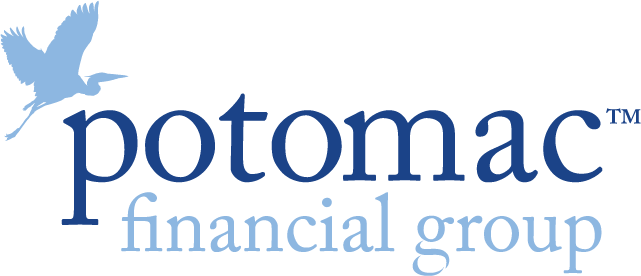Instead of hauling out those familiar New Year’s resolutions about eating less and exercising more, how about focusing on your financial well-being? Here are 12 resolutions that can help ensure your financial confidence in retirement.
1. Get your balance sheet in order
You can’t expect to reach a goal without knowing where you’re starting from. Using December 31 as the effective date, update your personal balance sheet (assets versus liabilities, broadly speaking). If you’re retired, make note of the income you receive from Social Security, pensions, retirement plan assets or other sources. Everything proceeds from this first step, so take the time to bring these numbers up to date.
2. Review your budget and spending
How closely did last year’s spending match what you’d planned? Where did you go off track, and why? Were unexpected increases one-time items or ongoing costs? Where can you trim expenses?
Although some budget items are fixed, a sharp pencil can produce significant savings on other costs. Start with what you realistically expect to have as income, then assign those dollars to your various expense categories, while also maintaining flexibility to account for things like healthcare that can’t be pinned down precisely.
3. Review your account titling
Account titling often occurs haphazardly, which can create problems down the line. If one partner dies and an account is titled only in their name, those assets can’t be readily accessed by the survivor. The solution may be creating joint accounts, but it’s not always that simple. Titling has implications across a range of estate planning issues, as well as other situations such as Medicaid eligibility and borrowing power, too. Review your account titling and discuss with your team of professionals.
4. Designate and update your beneficiaries
If you don’t correctly document your beneficiary designations, who gets what may be determined by federal or state law, or by the default plan document used in your retirement accounts. When did you last update your designations? Have life changes (divorce, remarriage, births, deaths, state of residence) occurred since then?
Update your beneficiary listings on wills, life insurance, annuities, IRAs, 401(k)s, qualified plans and anything else that’d affect your heirs. If you’ve named a trust, have any relevant tax laws changed? Have you provided for the possibility that your primary beneficiary may die before you? Does your plan address the simultaneous death of you and your spouse? An estate attorney can help walk you through these various scenarios.
5. Evaluate your cash holdings
A certain amount of assets should be set aside in cash accounts that can be readily accessed – talk with your advisor about whether your current allocation strikes the right balance. Note that the cash portions of your brokerage and retirement accounts serve a different purpose and shouldn’t be counted as emergency reserves.
Also, note where your cash reserves are located. Only banks that are members of the Federal Deposit Insurance Corp. can offer FDIC coverage, and only up to $250,000 per account holder. There are some complexities – and opportunities – within the FDIC rules, so be sure you understand them completely.
6. Revisit your asset allocation
Appreciation in one asset class or underperformance in another can leave your portfolio with a different allocation than what you originally intended. Revisit your current and ideal asset allocation at least annually and rebalance as needed (consider rebalancing with new contributions to help avoid capital gains taxes).
Consider, too, whether you’re comfortable with your portfolio’s current level of risk. Risk tolerance isn’t static – it changes based on your net worth, age, income needs, financial goals and other considerations.
7. Evaluate your retirement income sources
Most retirees have several income sources, such as Social Security, pensions, retirement portfolios, rental properties, notes receivable, inheritances, etc. Think about how secure each source is. Can you count on that inheritance? Would rental property vacancies interrupt your cash flow? Are the notes receivable backed by collateral? If too much of your retirement income is from less-than-solid sources, it may be time to reposition your assets.
8. Review your Social Security statement
If you’re not yet retired, go online and establish an account with the Social Security Administration – the SSA doesn’t mail out individual statements of accrued benefits anymore. Review your statement, and be sure all your earnings over the years have been recorded. Use the SSA’s online calculator to compute your benefits at various retirement ages. If appropriate, revisit your spousal plan and revise as needed.
9. Review the tax efficiency of your charitable giving
Think strategically about your contributions – for example, consider donating low-basis stocks rather than cash, or learn about establishing a donor advised fund to take an upfront deduction for contributions made over the next several years. Give, but do so with an eye toward reducing your tax liability.
10. Check whether your retirement plan is on track
What changes are needed given your current lifestyle and the market environment? Don’t fixate solely on your retirement assets’ value – instead, drill down into what types of assets you hold, what your expected cash flow will be, what your contingency plans are, what rate of return you’re assuming, what inflation rate you’re assuming and how long you’re planning for. Retirement plans have many moving parts that must be monitored on an ongoing basis.
11. Make the indicated changes
You should now have a good idea of your cash flow situation, what your retirement income picture looks like and where other challenges lie. Do you need to adjust your IRA contributions, other account contributions or tax withholding? If you’re due for a raise, could you channel the extra money into a retirement account? Are you taking full advantage of your employer’s retirement plan options, particularly any contribution match? Go after any problems areas – or opportunities – systematically and promptly.
12. Schedule a regular review with your advisor
Your advisor can help offer specialized tools, impartiality and experience earned by dealing with many market cycles and client situations. Communicate openly, telling him or her not only what’s happening in your life today but what might happen in the future. Advisors can’t help you manage what they don’t know, so err on the side of over-communicating. Establish a regular meeting schedule to review your portfolio and retirement plans.
There is no assurance that any investment strategy will be successful. Asset allocation does not guarantee a profit nor protect against loss. The process of rebalancing may result in tax consequences. Raymond James and its advisors do not offer tax or legal advice. You should discuss any tax or legal matters with the appropriate professional. Donors are urged to consult their attorneys, accountants or tax advisors with respect to questions relating to the deductibility of various types of contributions to a donor advised fund for federal and state tax purposes. To learn more about the potential risks and benefits of donor advised funds, please contact Raymond James.
Links are being provided for information purposes only. Raymond James is not affiliated with and does not endorse, authorize or sponsor any of the listed websites or their respective sponsors. Raymond James is not responsible for the content of any website or the collection or use of information regarding any website’s users and/or members. Raymond James does not provide tax or legal services. Please discuss these matters with the appropriate professional.

